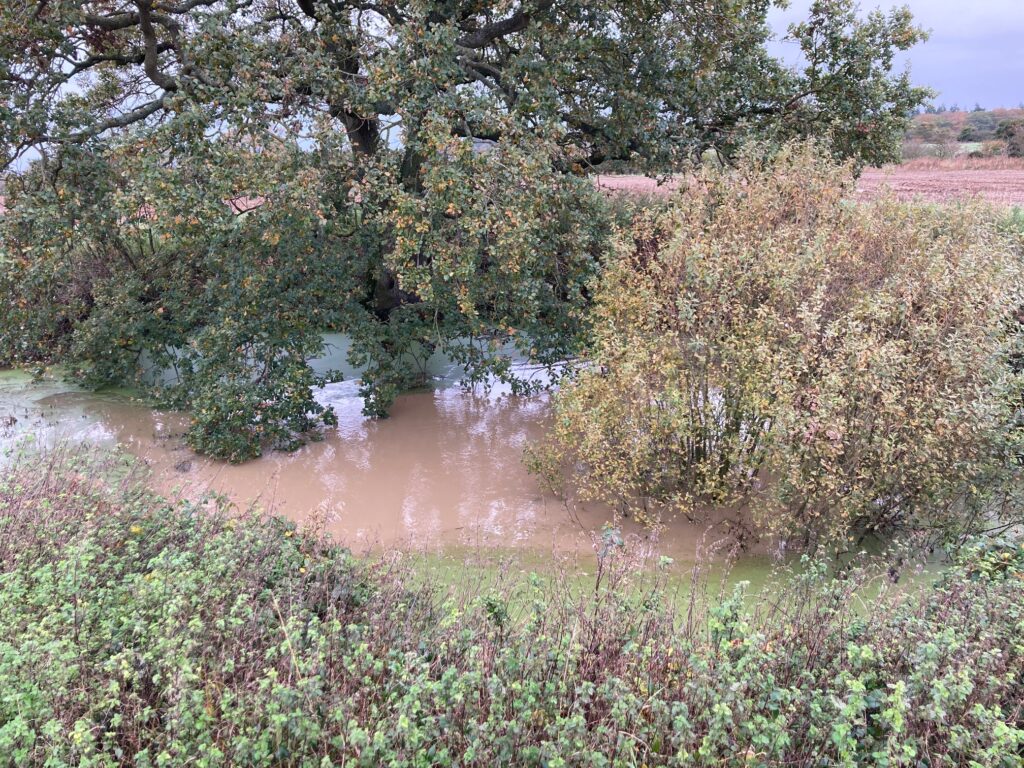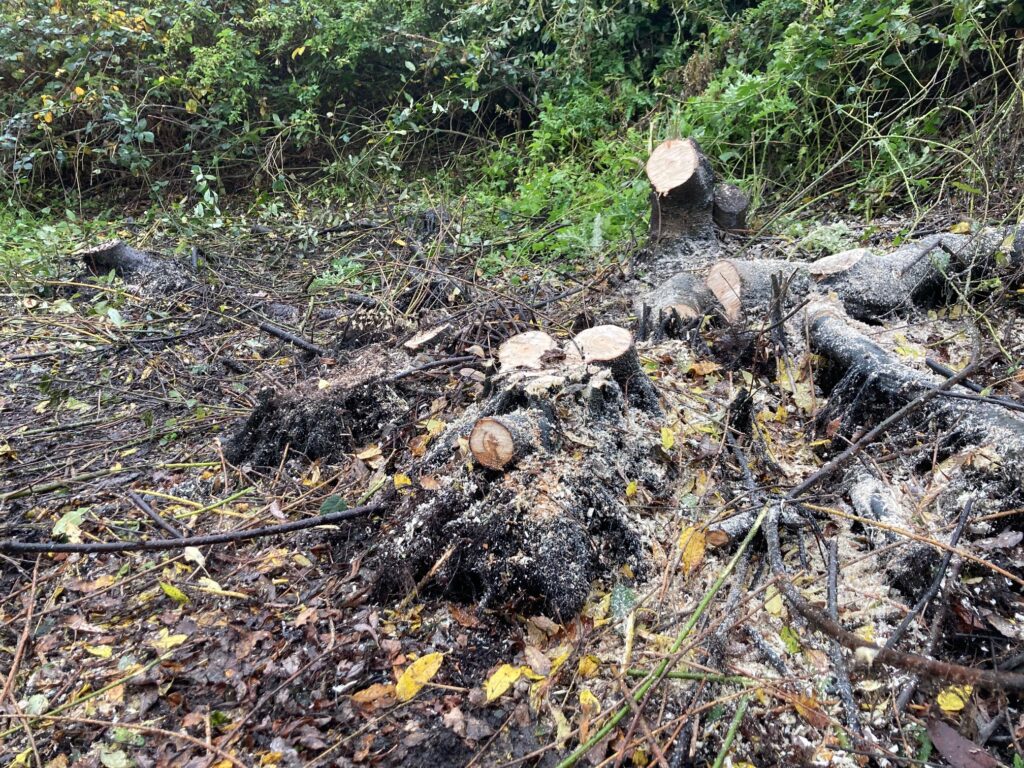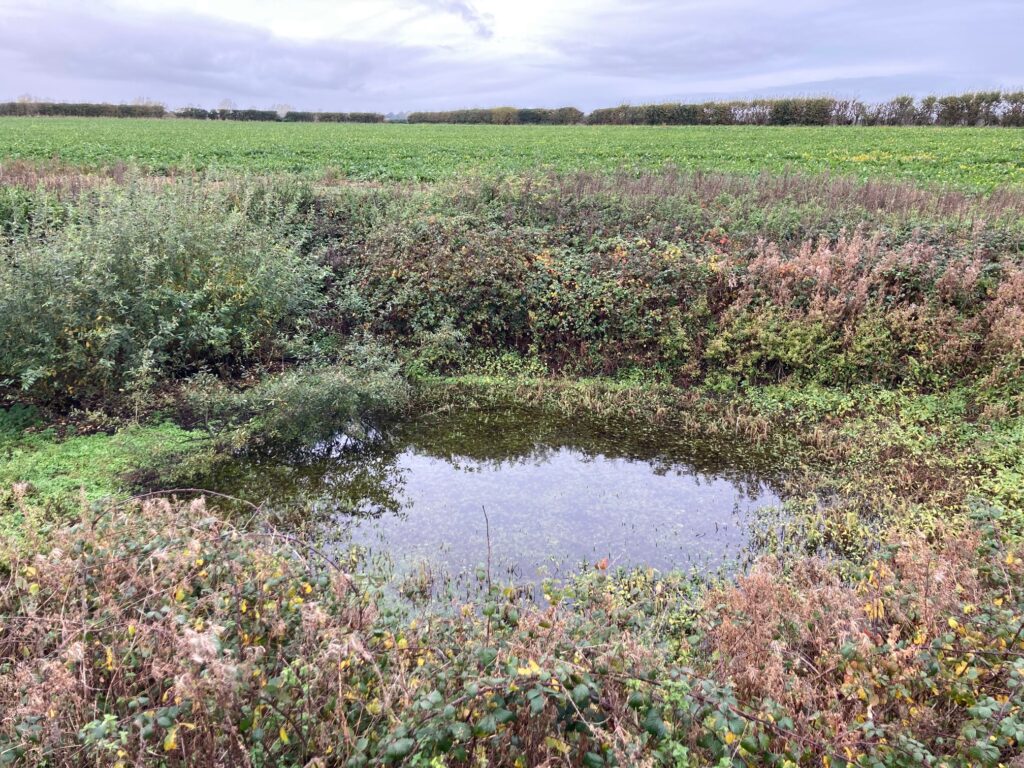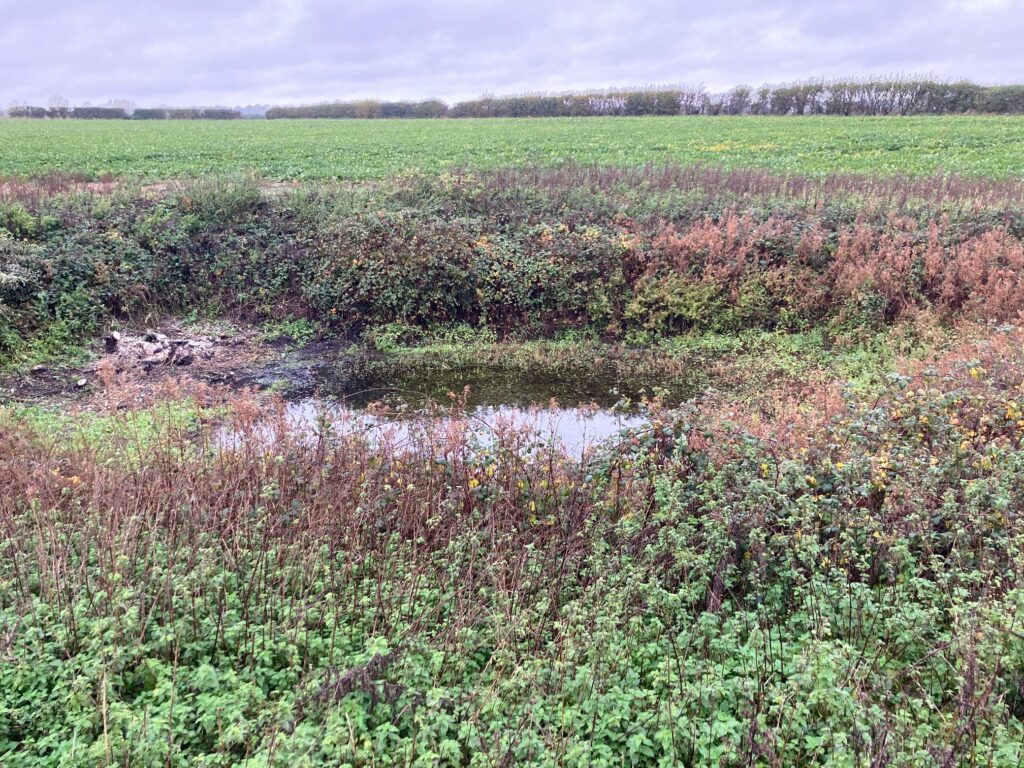Pond 33
We’ve had a lot of rain recently and it was still raining with a cold wind when I set out to Pond 33 with chainsaw in hand yesterday. This pond is one of the closest to the farmyard but hard to spot from a distance with no visible trees and surrounded by yet to be harvested sugar beet.
The ponds at Manor Farm vary in how much they are influenced directly by rainfall and how much they depend on underground springs. Even in the adjacent field Pond 25 had rapidly filled with muddy water as the rainfall intensity overwhelmed the ability of the grass buffer strip to filter the sediment from the surface runoff. We perhaps need to try either increasing the size of the buffer strip and/or creating a small earth bank on the up slope side of the pond – this has helped before at a different pond.

Anyway Pond 33 appears much more dependent on springs and the water level is still a metre lower than when I was last here in February – about a third of the base of the pond is still dry enough to walk on even though it is 4m below ground level (it’d be great one day to persuade a friendly academic to do some isotope analysis on the water to better understand where it’s come from).
Once down in the pond it is so much warmer out of the wind that it is easy to see why birds value the shelter from harsh weather. My unfinished business is a willow growing out of the pond base rather than on the banks. Back in February I got very wet trying to saw off branches at the water level – with the water level lower I’ve a chance to address those branches that have leant out towards the centre of the pond and put down roots there. My intention is to coppice the willow back to it’s bankside position. However I want to retain as much as possible of the complex of nobbly stools and roots which are a valuable habitat for invertebrates.

Two hours later and the job is complete. The chainsawing is the easy part – more difficult is getting the cut wood out of the pond as we do not want to leave dead wood in the water. Some stems can be piled or placed on the banks so they don’t fall back in, others can be neatly stacked on the grass margin but often it is necessary to trailer away the cuttings. In this case the pieces were small enough (with some effort!) to throw out of the pond but bigger trunks once cut can be hauled out with a chain and tractor etc (though not ideal if the surrounding crop has not yet been harvested.



 Next Post
Next Post